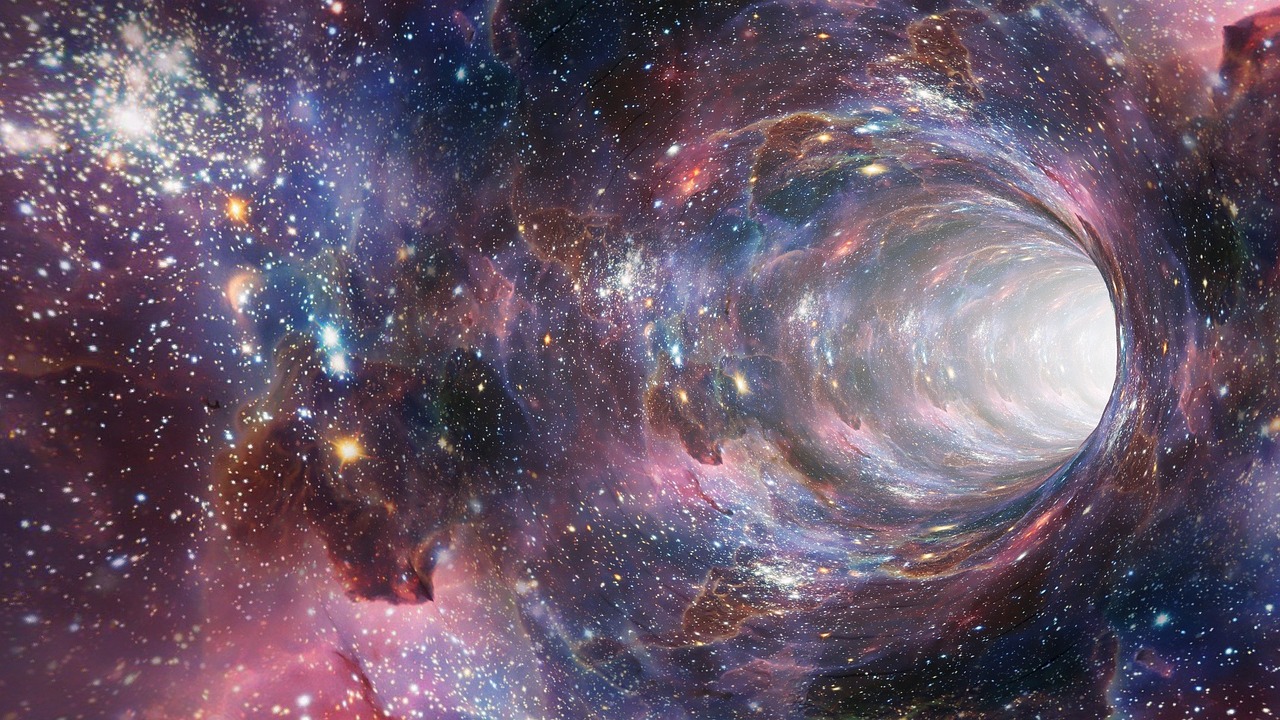The dark side of the universe holds a mesmerizing allure that captivates the imagination. It is a realm filled with enigmatic phenomena, such as dark matter, dark energy, and black holes. These cosmic mysteries beckon us to delve deeper into their secrets, unveiling the hidden beauty that lies within.
Dark matter, for instance, is a perplexing substance that pervades the universe, yet remains elusive to our understanding. It does not interact with light or any other form of electromagnetic radiation, making it invisible to our telescopes. Scientists are tirelessly working to detect and comprehend this mysterious matter, as it is believed to make up a significant portion of the universe’s mass.
Another enigma that resides in the dark side of the universe is dark energy. This puzzling force is responsible for the accelerated expansion of the cosmos. Its nature and origin remain shrouded in uncertainty, prompting scientists to propose various theories and conduct experiments in hopes of unraveling its secrets. The power and influence of dark energy continue to astound and fascinate astronomers.
And then there are black holes, the celestial behemoths that possess a gravitational pull so strong that not even light can escape their grasp. These cosmic monsters, formed from the remnants of massive stars, warp the fabric of space and time around them. They are both terrifying and awe-inspiring, representing the extreme limits of our understanding of the universe.
As we explore the dark side of the universe, we are confronted with its enigmatic beauty. It is a realm where the laws of physics are pushed to their limits, where the unknown beckons us to unravel its secrets. Through scientific inquiry and the relentless pursuit of knowledge, we inch closer to comprehending the mysteries that lie within the depths of the cosmos.
Unveiling Dark Matter
Unveiling Dark Matter
Dark matter, the enigmatic substance that makes up a significant portion of the universe, continues to baffle scientists and astronomers alike. Despite its invisible and elusive nature, its presence can be inferred through its gravitational effects on visible matter.
Efforts to detect and understand dark matter have been ongoing for decades. Scientists have employed various techniques and instruments to study this mysterious substance. One approach involves observing the rotation curves of galaxies, which reveal that the visible matter alone cannot account for the observed gravitational forces. This suggests the presence of an invisible mass, which is believed to be dark matter.
Another method used to study dark matter is through the observation of gravitational lensing. When light from distant galaxies passes through regions with high concentrations of dark matter, it gets bent and distorted, providing indirect evidence of its existence.
Scientists have also conducted experiments deep underground to search for dark matter particles. These experiments involve highly sensitive detectors that are shielded from cosmic rays and other sources of background noise. By analyzing the interactions between dark matter particles and ordinary matter, scientists hope to gain insights into the nature of dark matter.
Despite the progress made in understanding dark matter, many questions remain unanswered. What exactly is dark matter made of? How does it interact with other particles? These questions continue to drive scientific research and exploration, as unraveling the mysteries of dark matter could provide crucial insights into the formation and evolution of the universe.
The Power of Dark Energy
The power of dark energy is a perplexing phenomenon that continues to baffle scientists and astronomers alike. This mysterious force is believed to be responsible for the accelerating expansion of the universe, counteracting the gravitational pull of matter and pushing galaxies further apart. But what exactly is dark energy and how does it shape the cosmos?
Dark energy is a hypothetical form of energy that permeates all of space and is thought to make up about 70% of the total energy content of the universe. Its existence was first proposed in the late 1990s when astronomers made a startling discovery: the expansion of the universe was not slowing down as expected, but rather speeding up. This unexpected observation led to the realization that there must be a force, now known as dark energy, driving this accelerated expansion.
Despite its name, dark energy is not directly observable or detectable. Its nature remains a mystery, leaving scientists with more questions than answers. Various theories have been put forth to explain the origin and properties of dark energy, ranging from the existence of a cosmological constant to the presence of a new fundamental particle. However, none of these theories have been conclusively proven, leaving the true nature of dark energy shrouded in uncertainty.
Scientists are actively engaged in a quest to unravel the secrets of dark energy. They are conducting experiments, such as the Dark Energy Survey and the European Space Agency’s Euclid mission, to gather data and gain insights into this enigmatic force. By studying the distribution of galaxies, the cosmic microwave background radiation, and the large-scale structure of the universe, researchers hope to shed light on the true nature of dark energy and its role in shaping the cosmos.
In conclusion, the power of dark energy continues to captivate scientists and fuel their curiosity. Its role in the expansion of the universe and the various theories and experiments attempting to unravel its secrets make it a fascinating subject of study. As our understanding of dark energy deepens, we may come closer to unlocking the mysteries of the universe and gaining a more comprehensive understanding of the forces that govern its existence.

